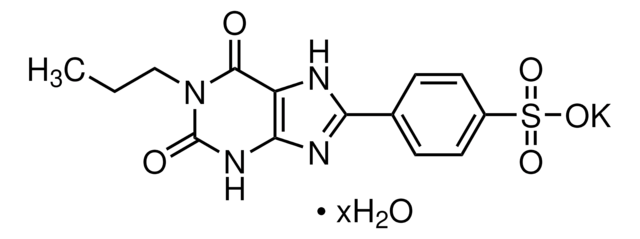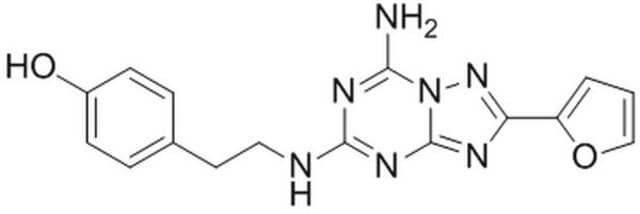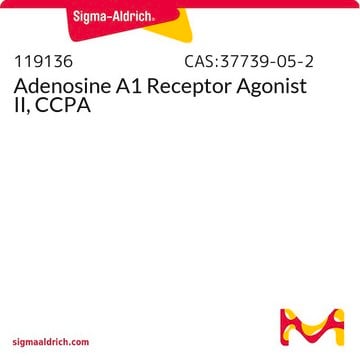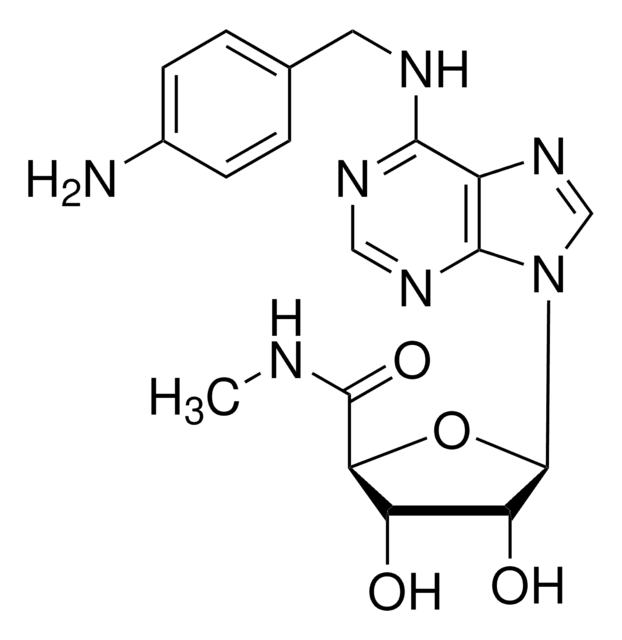M228
MRS 1220
solid
Synonym(s):
9-Chloro-2-(2-furanyl)-5-((phenylacetyl)amino)-[1,2,4]triazolo[1,5-c]quinazoline
About This Item
Recommended Products
form
solid
Quality Level
color
white
solubility
DMSO: 2 mg/mL
2-hydroxypropyl-β-cyclodextrin: insoluble
H2O: insoluble
ethanol: insoluble
SMILES string
Clc1ccc2nc(NC(=O)Cc3ccccc3)n4nc(nc4c2c1)-c5ccco5
InChI
1S/C21H14ClN5O2/c22-14-8-9-16-15(12-14)20-25-19(17-7-4-10-29-17)26-27(20)21(23-16)24-18(28)11-13-5-2-1-3-6-13/h1-10,12H,11H2,(H,23,24,28)
InChI key
TWWFAXQOKNBUCR-UHFFFAOYSA-N
Gene Information
human ... ADORA3(140)
rat ... Adora1(29290) , Adora2a(25369) , Adora3(25370)
Biochem/physiol Actions
Features and Benefits
Storage Class
11 - Combustible Solids
wgk_germany
WGK 3
flash_point_f
Not applicable
flash_point_c
Not applicable
ppe
Eyeshields, Gloves, type N95 (US)
Certificates of Analysis (COA)
Search for Certificates of Analysis (COA) by entering the products Lot/Batch Number. Lot and Batch Numbers can be found on a product’s label following the words ‘Lot’ or ‘Batch’.
Already Own This Product?
Find documentation for the products that you have recently purchased in the Document Library.
Our team of scientists has experience in all areas of research including Life Science, Material Science, Chemical Synthesis, Chromatography, Analytical and many others.
Contact Technical Service








